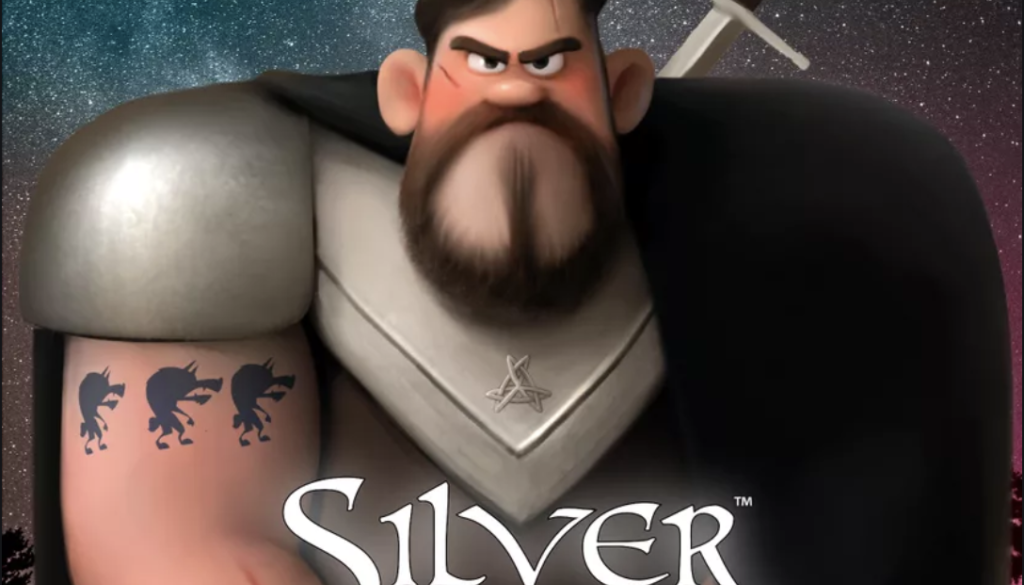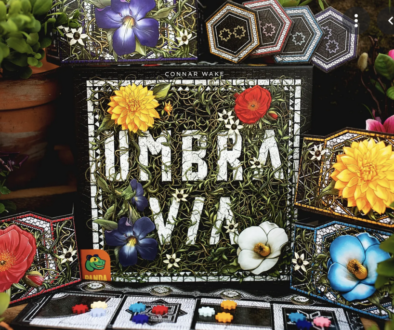How to Play Silver
Werewolves are taking over your village, and it’s your job to get them out! Silver is a really fun hand management cardgame for 1-4 players from Bezier game. It involves some memory, some strategy, and a bit of luck too.
Right now there are 4 different silver games – Silver amulet, bullet, coin, and dagger. They all have the same basic gameplay, with a special token that adds something different to each game. So in this video, we’re going to use Silver Amulet to teach the basic gameplay that’s the same in all of the games, and then tell you about the differences between the games at the end.

In the game, the numbers on the cards represent werewolves, and you are trying to get rid of werewolves, so you want to try to get rid of the high cards and get low cards in your village. But here’s the hard part – you don’t get to look at most of your cards!
The cards do two things – they all have a number on top – That’s how much the card adds to your score if it’s in your village at the end of the round – and then they have an action at the bottom. The higher the number, the stronger the villager’s ability.
Cards with this icon have an ability when they’re face up in your village, and cards with this icon let you use an ability when you draw them and immediately discard them, and this card lets you use its ability when you discard it from your hand.
So, for example, when this card is face up in my village, it lets me look at one of my facedown cards each turn. All of your cards will start face down, but during the game you’ll be able to get cards face up from either taking them from the discard pile, or if a card ability tells you to – like the 6 – it says turn any 1 card face up. But it doesn’t say one card in my village, so I could turn another players card face up if I wanted to.
Each game comes with a detailed card reference guide in case you get confused. So don’t feel like you need to know what all the cards do before you play. Just jump in and start playing, and if you’re ever confused about a card, check the reference guide.
To set up the game, shuffle the deck and deal 5 cards to each player facedown in a row. No matter how many people are playing, you always deal 4 sets of cards and then remove the unused sets. So we’re going to deal for 4 people, and then if you have fewer players remove the extra sets and just put them to the side for this round – but you will shuffle them back in for the next round.
Put the rest of the deck facedown in the middle of the table and turn the top card faceup next to the deck – this is the discard pile. Then pick a first player and give them the token – in this case It’s the amulet.
Now, everyone can pick 2 cards – and only 2 cards – to look at secretly. You don’t get to know what the rest of your cards are. After this, the only way you will know what your cards are is if an ability lets you look, or turn it face up, or if you exchange it with a card you draw. If you forget what one of your cards was, you CANNOT look at it again. That’s where the memory comes in.
Now it’s time to start playing.
During your turn you can do 1 of 3 things – you can take a card from the deck, you can take a card from the discard pile, or you can call for a vote.
If you take a card from the deck, you have 2 options – swap it with one of your cards – or discard it. If you swap it, discard one of your cards, and put the card you drew facedown where the other card was. Any time you swap a card from the draw pile, it goes face down. If you discard it, you can use its ability if it has one of these card flip icons. All of the cards tell you what their abilities do.
So let’s say I draw this 9 – it’s ability Is to look at any card on the table – so I discard it and use that ability.
Or, I draw this 3 – and because it’s low, I want to swap it with a high card in my village. So I would discard this one and put the three in its place.
If you take a card from the discard pile, you have to swap it with one of your cards –- and you put it face up, since it was already face up in the discard pile. Any time you swap a card from the discard pile, it goes face up. If you take a card from the discard pile, you can use its face up ability when it’s in your village, but you CANNOT take a card from the discard pile and discard it for its ability. So I couldn’t take this discarded 9 and use it again to look at a card.
When you’re exchanging cards, you don’t get to look at the card from your village first. You may know what it is because another card let you look at it, or it was one of the two cards you checked at the beginning – but you don’t get to check it before you exchange it.
Now, when you draw a card and exchange it with one of your cards, there is a way to get rid of multiple cards at once. You can do this by exchanging multiple cards that match. So I draw this 3, and I know that these two cards are 10’s. I can exchange the 3, and get rid of both of these because they match. You can get rid of as many cards as you want this way, as long as they match, so if I have 3 10’s, or even 4, I could discard them all at once. But if you’re wrong, you put all of your cards back face down, and you add the card you drew to the end of your village – face down if it was from the draw pile and face up if it was from the discard pile. If you try to get rid of 3 or more cards this way and you’re wrong and they don’t match, you have to draw an EXTRA card and add it to your village face down.
Now let’s talk about calling for a vote.
If you have 4 or fewer cards in your village and you think you have the lowest score, you can call for a vote on your turn. Everyone else gets one more turn, then everyone shows their cards and adds up their score. Once you call for a vote, YOU don’t get to do anything else, and calling for a vote is the ONLY thing you can do on your turn.
The round also ends after the last card is drawn.
So, on your turn you do one of those three actions – draw a card, take a card from the discard pile, or call for a vote. Then play goes clockwise around the table until the round ends, then it’s time to score.
To score, add up all of the numbers on your cards, and be sure to check and see if any abilities on your cards affect your score.
If you called for a vote and have the lowest score, you get zero points, but if you’re the lowest, you get the sum of your cards plus 10 points.
Then shuffle all of the cards – including any you set aside at the beginning of the round, out 4 sets of five, and start the next round. The player with the lowest score in the previous round goes first. The game lasts 4 rounds total, and you add each round to your total score. The player with the lowest total score at the end of the game wins!
Now let’s talk about the different tokens – the Amulet, the Bullet, The Coin, and the Dagger..
In the first round, all of the tokens go next to the draw and discard pile in front of whoever you chose to be the starting player, and their only purpose in round 1 is to mark the starting player.
After each round, the token will go in front of the player who had the lowest score in the last round, but you only get to USE the token if you successfully called for a vote in the last round, meaning you called for a vote AND you had the lowest score. If nobody successfully called for a vote, it just goes next to the draw pile on the side of the person with the lowest score in the previous round to make the starting player.
If you successfully called for a vote in the last round, take the token and pull it in front of you for the round – you will now get to use it one time in that round.
So what do they do?
For the amulet – Once per round, you can put the amulet on one of your cards. That card can’t be moved or viewed by anybody, including you, until the end of the round. Then it’s scored by normal. If you put the amulet on a face up card, you can still use that cards ability.
With the bullet, once per round, you can put on one of your cards and that card can’t be moved or viewed by anybody, but at the end of the round, the card with the bullet on it is NOT scored. If the bullet card is face up, the bullet de-activates its ability. Also, the card with the bullet on it does NOT count toward your card count when you determining if you can call for a vote.
For the coin – once per round you can flip over the coin AND one of the cards in your village, but that card isn’t protected, it’s just a normal face up card.
And the dagger shows the direction of play. At the start of the round, the dagger should always point to the left – showing play goes clockwise. If a card reverses the direction of play, turn the dagger to show the new direction. If you have the dagger because you successfully called for a vote in the last round, then you get to turn the dagger and change the direction of play once in that round.
And remember at the beginning of each round, the token goes in front of the player who had the lowest score in the previous round. If they had the lowest score AND they were the one who called for a vote, they get to use its ability once in that round.
And that’s Silver. If you have any questions, or…

